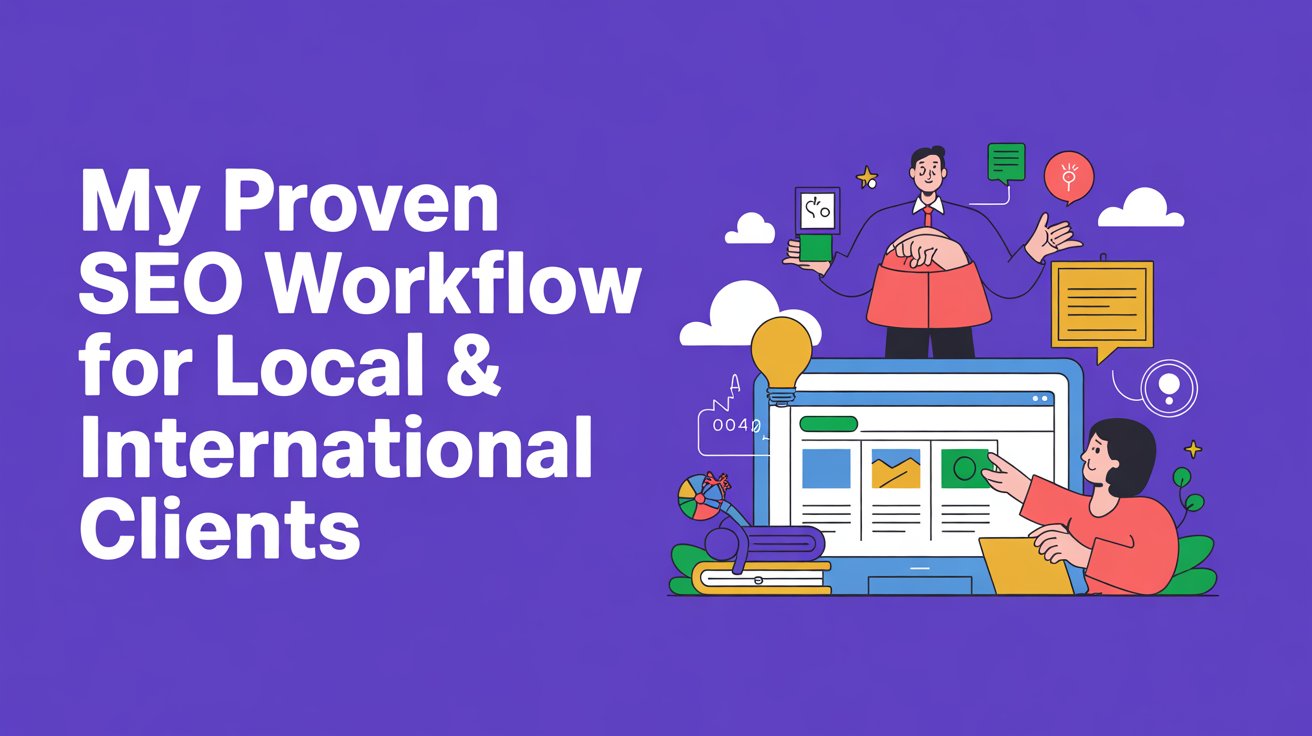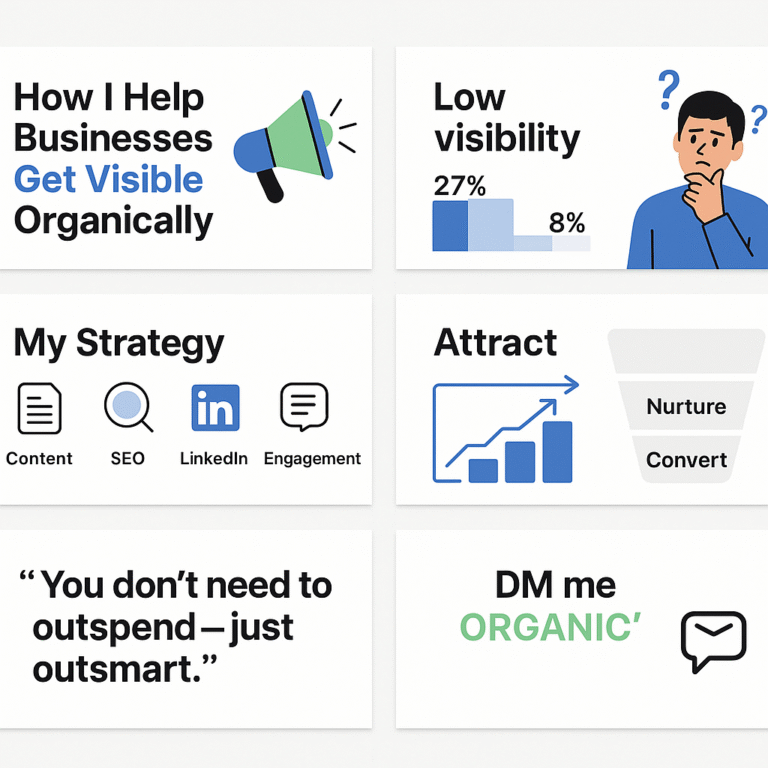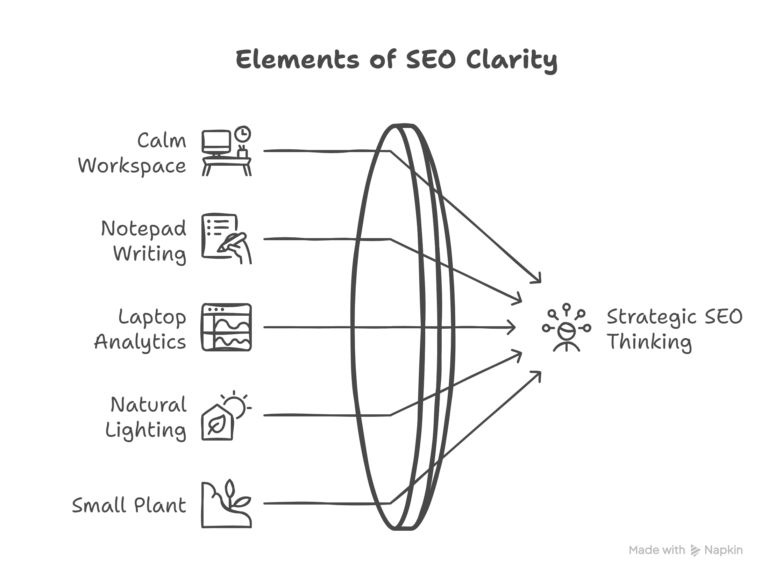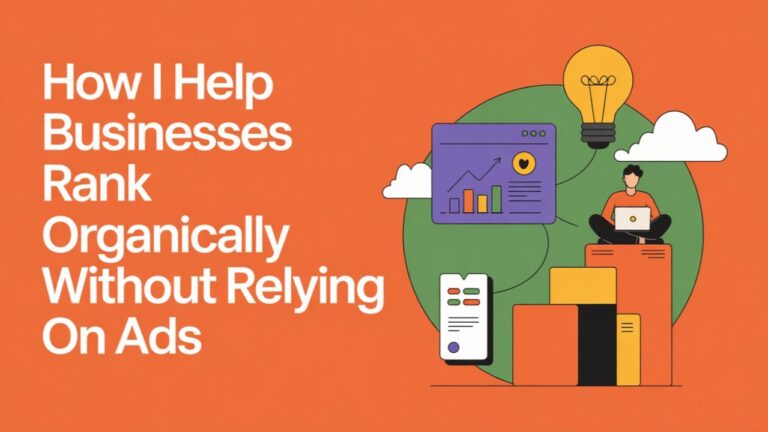Every business wants to be seen — but in today’s digital landscape, simply existing online isn’t enough. You need visibility at the right time, by the right people. That’s where SEO makes all the difference.
I’ve worked with local businesses in quiet Texas suburbs and international brands across the UK, Europe, and Australia. And despite the differences in scale and market, one thing is always true: a smart SEO workflow changes everything.
But I’ll be real with you — I didn’t get it right from day one.
In the early days, I struggled. I tried every tool, followed outdated tactics, and wasted a lot of time. But after countless hours of trial and error, I developed a system that consistently works — no fluff, just results. Whether you’re a local gym or a global eCommerce store, this is the SEO process I use to help you grow.
Let’s dive in.
🔑 Key Takeaways
- There’s no one-size-fits-all SEO strategy — local and international SEO require different approaches.
- A refined workflow boosts efficiency and delivers consistent results.
- Growth comes from smart research, strong execution, and clear reporting.
- You don’t need ads to grow — just the right organic process.
1. Client Discovery: Understanding the Business & Audience
Before diving into tools and tactics, I start with a conversation. Why? Because SEO is about real people, not just search engines.
I ask questions like:
- What’s your business story?
- Who are your ideal customers?
- What makes your service stand out?
- What questions do customers frequently ask?
One solar client from Sydney simply said, “We sell solar panels.” But after some digging, I discovered their true value proposition: helping families save on energy bills and reduce their carbon footprint. That insight completely transformed our SEO strategy — from keyword research to content.
I also build a simple customer journey: Awareness → Consideration → Decision.
This roadmap shapes everything that follows.
🔍 Pro Tip: Always start with a brand audit. Review the website, content, and social presence to identify gaps and strengths.
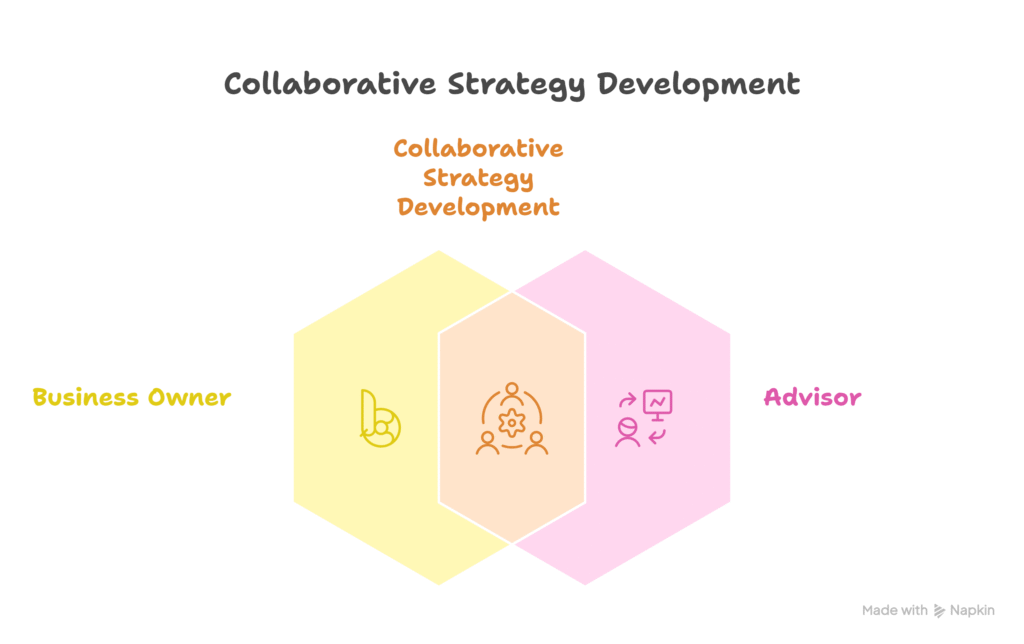
2. Market & Competitor Research: Finding the Gaps
Next, I shift focus to competitors — not to copy, but to outsmart.
Local SEO:
I explore local map packs, Google Business Profiles, and service-based keywords using tools like BrightLocal.
International SEO:
I use:
- Ahrefs
- SEMrush
- SimilarWeb
- Google Search Console
I look for:
- High-performing keywords
- Content gaps
- Backlink opportunities
- Technical SEO issues
For instance, a UK eCommerce client wasn’t targeting high-intent terms like “eco-friendly gifts UK.” Fixing this one gap led to a 38% traffic increase in three months.
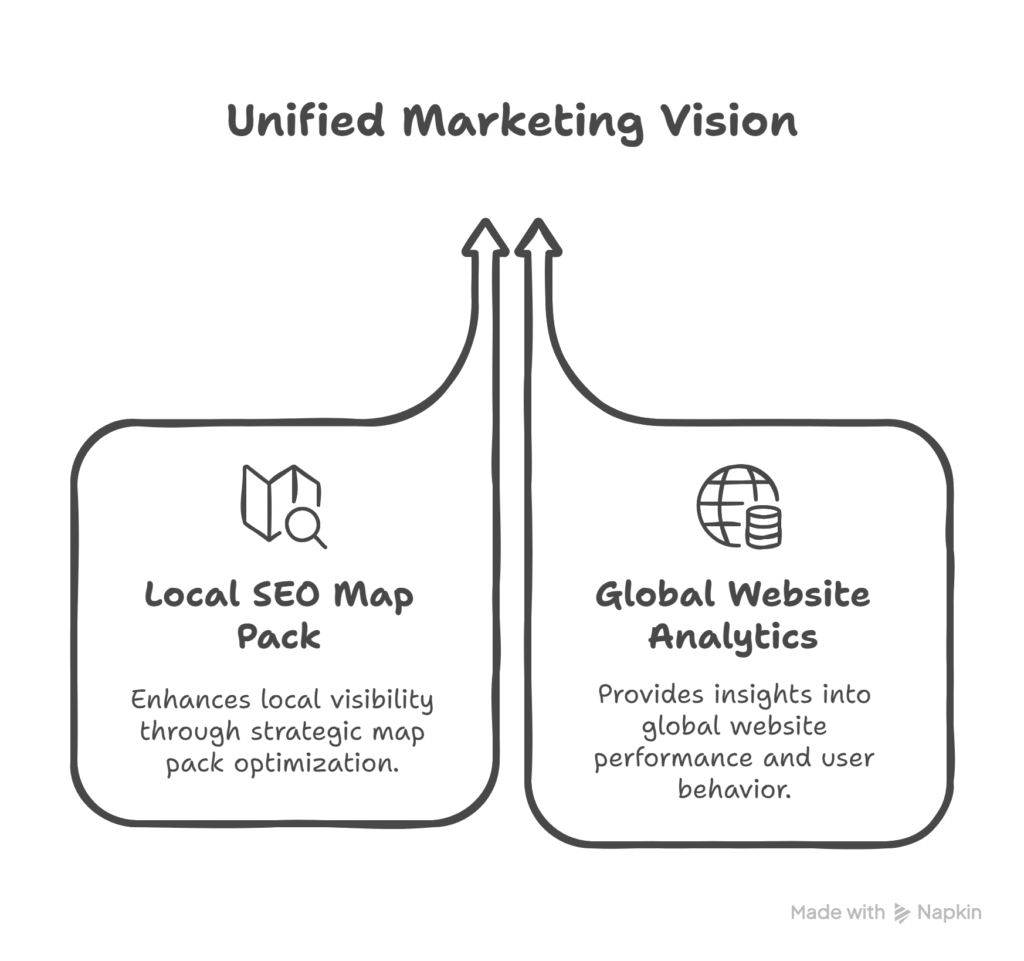
3. Keyword Strategy: Intent Over Volume
Most people chase volume. I chase intent.
I target:
- Local intent: “solar panel installation Austin”
- Commercial terms: “buy solar light online”
- Long-tail keywords: “cost of solar setup in Texas”
I map each keyword to the customer journey and use:
- Google Search Console
- Ubersuggest
- Ahrefs
- Keyword Planner
For international clients, I localize everything — even spelling differences like “optimize” vs. “optimise” matter.
💡 Ask yourself: “Will this keyword drive the right traffic?”
4. On-Page SEO: Turn Every Page Into a Sales Tool
Once we lock in the keywords, I move to content optimization:
My on-page checklist:
- Title tags = keyword + benefit
- Meta descriptions = compelling & action-driven
- H1-H2 = clean, clear structure
- Content = helpful, engaging, and human
- Internal linking = relevant pathways
- Image alt text = descriptive
- URLs = clean & simple
Example: A California solar client had a bare service page. I rewrote it with customer-focused content, benefits, FAQs, and local keywords. It ranked in the top 3 in just two months.
5. Content Creation: Build Authority, Not Just Traffic
Content is your long-term investment.
My process:
- Answer your audience’s real questions
- Avoid fluff — focus on clarity and value
- Use stories to build trust
Instead of “Top 10 Solar Devices,” we created:
- “How I Saved $450 with 3 Solar Devices”
- “How Solar Energy Is Transforming Lives in Africa”
This type of content attracts traffic and builds a loyal audience.
My content schedule:
- 2–4 blogs/month
- 1 guide or case study/quarter
- Ongoing content updates
6. Technical SEO: Build a Strong Foundation
Great content fails if your site is slow or broken.
My routine:
- Weekly crawls (Screaming Frog, Sitebulb)
- Fix broken links, duplicate content, missing tags
- Run speed tests (GTmetrix, PageSpeed Insights)
- Mobile optimization checks
- Address crawl issues in Search Console
A global client had a 9-second load time. After speed optimization, bounce rate dropped 27%. That’s the power of clean technical SEO.
7. Local SEO: Get Discovered in Your Area
Local SEO needs special attention. Here’s what I do:
Google Business Profile (GBP):
- Complete setup with photos, services, keywords
- Collect/respond to reviews
- Weekly local posts
Other steps:
- Create consistent citations (Apple Maps, Yelp)
- Ensure NAP (Name, Address, Phone) consistency
- Post hyper-local content (e.g., neighborhood tips, community events)
A Chicago client jumped from page 5 to page 1 just by optimizing GBP and earning 15 new reviews in a month.
8. Link Building: Focus on Authority, Not Volume
Spammy backlinks don’t work anymore. I build relationships, not just links.
My approach:
- Guest posts on relevant sites
- Local PR and sponsorships
- Shareable content
- Broken link outreach
One client’s “Solar Setup Checklist” earned 17 backlinks from energy and homeowner blogs — boosting traffic and rankings fast.
📌 Note: Never buy links. Earn them.
9. Tracking & Reporting: Show What Matters
SEO without tracking is guesswork. I monitor:
- Keyword rankings
- Organic traffic (GA4)
- Leads & conversions
- Backlink profiles
- Technical health
I send monthly reports that show:
- What improved
- What we’re fixing
- What’s next
Clients love the clarity — no jargon, just results.
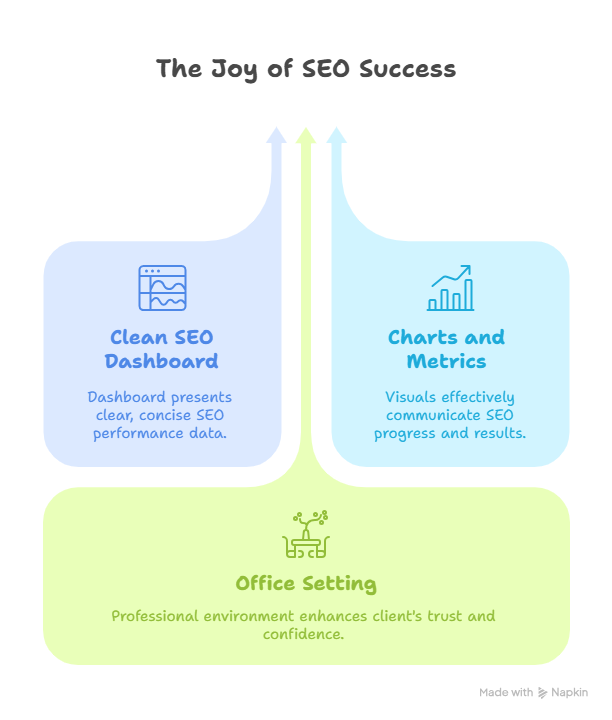
❓ FAQs
Local vs. International SEO?
Local targets a region (e.g., “Austin solar installer”). International covers multiple countries/languages — more complex but scalable.
Do I need backlinks?
Yes — but only high-quality ones. One strong backlink beats 100 weak ones.
Is content still king?
100%. Content builds trust, answers questions, and fuels organic growth.
Final Thoughts: Organic Growth Is a Process — Not a Hack
If you’ve made it here — thank you.
SEO can be overwhelming. But with the right strategy and consistent action, it works. Whether you’re a local brand trying to stand out or a global company expanding reach, this workflow can take you there.
I’m not just passionate about SEO — I live it. Every win for my clients fuels my drive to keep growing.
If you’re ready to stop spinning your wheels, start building momentum.
📈 Let’s grow your business — the organic way.
👉 If you’re serious about growing organically, let’s connect for your business free audit:👍👍

